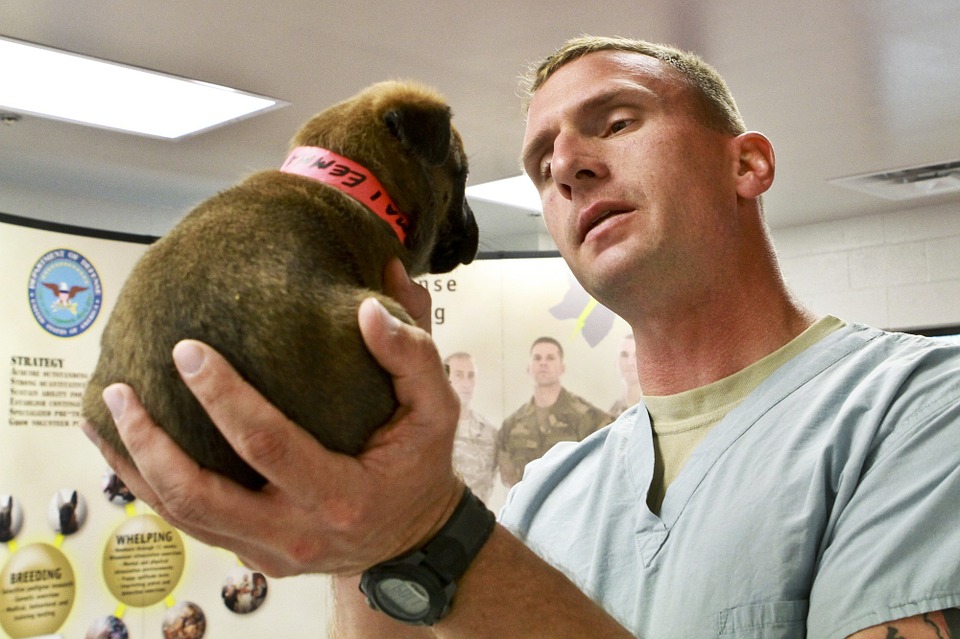Our emergency veterinarians are highly qualified and well-trained to provide you and your pet with the highest standard in emergency medical and critical care.

Preventing Ingestion of Foreign Bodies
We encourage pet owners to take certain preventative measures to avoid these situations. It’s important for animals to have safe environments that are clean and tidy, so they don’t have the opportunity to swallow any toxic or harmful objects. Keep an eye on your pets when they’re playing or spending time outside. Pets are naturally curious and they can easily ingest rocks, string, or toys that they should not. Feed your pets properly, so they are less inclined to eat random items.
Below is a list of common objects that pets are known to swallow. These objects often cause problems because they cannot be digested, they are toxic, or they will not pass through the body. If you do plan on letting your pets play with these objects, make sure they are closely supervised.
- Corn cobs
- Sticks
- Small bones
- String
- Balls
- Fishing hooks
- Small toys
- Coins
- Plastic
- Socks
BrightCare Animal Emergency is a 24-hour emergency animal hospital in Mission Viejo, CA. Our highly experienced emergency vets are trained to diagnose and treat animals in crisis. Stop by if you have a pet emergency that needs immediate attention.
Our team of veterinarians at BrightCare Animal Emergency offers endoscopy and foreign body removal services for small animals that may have accidentally swallowed something they should have. If you notice trouble breathing, loss of appetite, lethargy, vomiting, diarrhea, abdominal pain, dehydration, or bowel problems with your pet, alert your local veterinarian or an animal emergency center immediately. An ingested foreign body can cause serious complications in cats and dogs, so it needs to be removed as soon as possible.
Endoscopy & Foreign Body Removal
When an animal consumes an object that cannot pass through the gastrointestinal tract, that object is a foreign body. This can result in systemic toxicity, inflammation of the abdominal lining, infection, or obstruction of the intestinal tract if it stays lodged inside the animal.
The process of foreign body removal depends on what was ingested, how it was ingested, and when it was ingested. In certain cases, the object will naturally pass while others may require open surgery. Before the operation, the vet will perform a physical examination and complete X-rays (or other imaging scans) to determine the safest approach to remove the object. Then, the animal will be sedated with local or general anesthesia, depending on how invasive the surgery is.
Endoscopic Foreign Body Retrieval
Endoscopic retrieval: This is a minimally invasive procedure that can be used to procure the foreign body before it reaches the stomach or intestine. An endoscope with a camera will be inserted through the mouth and down the esophagus, so the vet can see where the object is lodged. Then, endoscopic instruments will be used to remove the object.
Thoracic surgery: If the foreign body reaches the bottom of the esophagus or diaphragm, an endoscopic retrieval may not be possible, so chest surgery may be required. This operation is more invasive, but it could be the only way to retrieve the foreign body.
Gastrotomy: If the foreign body is stuck in the stomach, gastronomy may be required.
Enterotomy: Foreign bodies that have passed through to the intestines may require the vet to open the gastrointestinal tract to remove them. Once the foreign body is removed, the site will be examined and any necessary surgical repair will be completed.
Post-Operation Recovery: Endoscopic Retrieval of Ingested Foreign Bodies:
For endoscopic retrieval, the dog or cat won’t need much time to recover. After the anesthesia wears off, pets should regain their appetite and resume normal activities.
Thoracic, stomach, or intestinal surgery, however, may require longer recovery time because inner organs may have been damaged by the foreign body. The stitches will also take time to heal. Pet owners should allow their pets plenty of time to rest and administer any medication from the veterinarian. Painkillers and antibiotics are commonly prescribed to suppress pain and prevent infection. The veterinarian will schedule a future appointment to remove any remaining sutures and ensure the progress of recovery.
FAQ
What is animal endoscopy?
An animal endoscopy in Mission Viejo is a procedure that does not involve invasive surgery. This procedure allows our vets to do an examination of internal organs and body parts using visual tools. It does not hurt your pet, and your pet will have to be sedated.
What is an endoscope used for in animals?
If your pet needs a pet endoscopy in Mission Viejo, the endoscope that is used is a very small camera. This camera is attached to the end of a scope. The entire tool is very small because it has to be inserted into either your pet’s mouth or rectum.
What equipment is used for an endoscopy?
The equipment used during a dog endoscopy in Mission Viejo is the endoscope, which we just talked about. An endoscope is a small tool that has a tiny camera attached to the end of it. Other equipment includes a monitor to monitor your pet while they are under sedation, and a monitor to see the inside of your pet’s body.
What is the procedure for an animal endoscopy?
An animal endoscopy in Rancho Santa Margarita procedure is reasonably straightforward. We have to sedate your pet so they can remain still on the table. We use a tiny camera to insert it into their body so we can see what is going on internally in your pet. It does not hurt them, and not surgery is needed.
What is an endoscope used for in pets?
If your pet needs a pet endoscopy in Ladera Ranch, we will have to use an endoscope during the procedure. An endoscope is used as a tool to be able to see inside your pet without having to perform the actual surgery.

